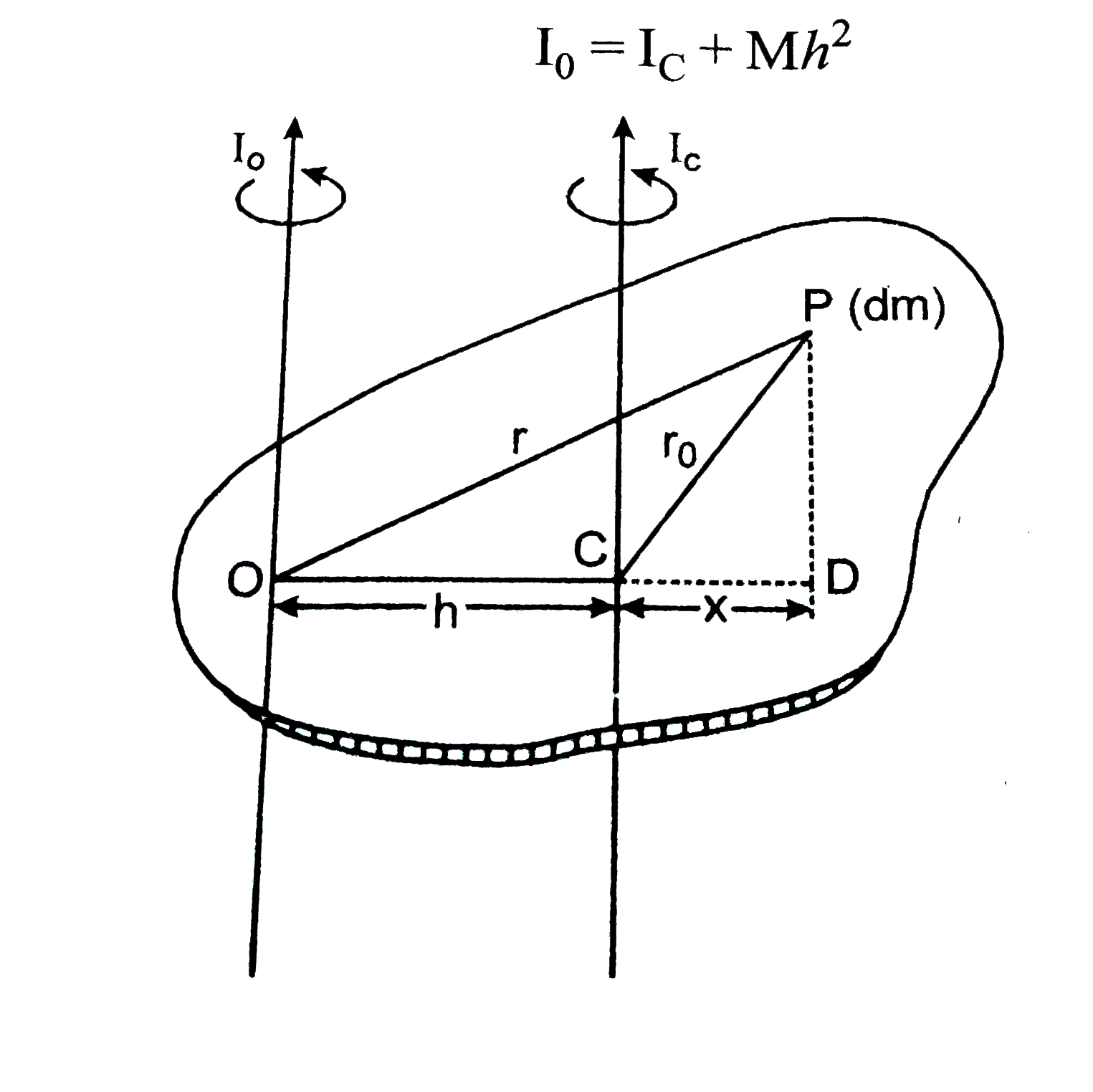State and prove theorem of parallel axes.
Video Solution
Text Solution
Theorem of parallel axes : The moment of inertia of a body about any axis is equal to the sum of its moment of inertia about a parallel axis passing through its centre of mass and the product of tis mass and the square of the perpendicular distance between the two parallel axes.

Consider a rigid body of mass M rotating about an axis passing through a point O and perpendicular to the plane of the figure (a).
Let, I0 be the moment of inertia of the body about an axis passing through point O. Take another parallel axis of rotation passing through the centre of mass of the body.
Let , IC be the moment of inertia of the body about point C.
Let, the distance between the two parallel axes be Oc=h. Take a small element of body of mass dm situated at a point P and OP =r and CP=r0. Join OP and CP, then
From point P draw a perpendicular to OC produced.
Let CD=x
From the figure,
OP2=OD2+PD2
∴OP2=(h+CD)2+PD2
=h2+CD2+2hCD+PD2
∴OP2=CP2+h2+2hCD
(∵CD2+PD2=CP2)
∴r2=r20+h2+2hx
Multplying the above equation with dm on both the sides and integrating, we get
∫r2dm=∫r20dm+∫h2dm+∫2hxdm
∫r2dm=∫r20dm+∫h2dm+2h∫xdm
∫xdm=0 as C is the centre of mass and algebraic sum of moments of all the particles about the centre of mass is always zero, for body in equilibrium.
∴∫r2dm=∫r20dm+h2∫dm+0.....(i)
But ∫dm= M = Mass of the body,
But ∫dm=M = Mass of the body,
∫r2dm=I0 and ∫r20dm=IC
Substituing in equation (i), we get
I0=IC+Mh2
This proves the theorem of parallel axes about moment of inertia.
|
Similar Questions
Knowledge Check
By the theorem of parallel axes:
AI=IG−md2BIG=I+md2CI+IG=md2DIG=I−md2
(a) Prove the theorem of perpendicular axes.
(Hint : Square of the distance of a point (x, y) in the x-y plane from an axis through the origin and perpendicular to the plane is ^(x2)+y2).
(b) Prove the theorem of parallel axes.
(Hint : If the centre of mass of a system of n particles is chosen to be the origin ∑miri=0).
View SolutionState and prove Baye's theorem.
View SolutionState and prove theorem of perpendicular axes.
View SolutionState theorem of parallel axes and therom of perpendi cular axes about moment of inertia.
View SolutionAccording to the theorem of parallel axes I=Icm+Mx2, the graph between I and x will be
View SolutionState and prove Gauss's law in electrostatics.
View SolutionState Rolle’s theorem.
View Solution
